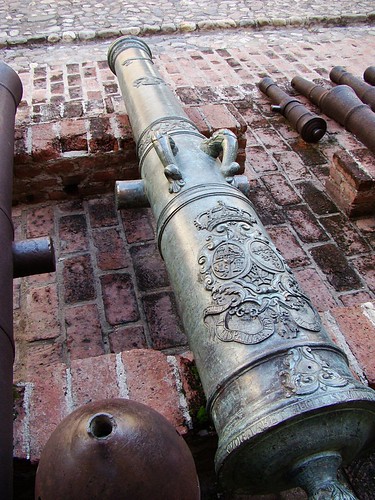Our last trip was to Carlos Paz, a city about an hour from Córdoba. Carlos Paz is a busy town traversed by the small San Antonio River, with opens into Lake San Roque, formed by the dam of the same name. It's an all-time tourist trap, not unlike Mar del Plata, and like Mardel, it's full of over-colourful marquees advertising plays starred by wrinkled middle-age "actors" and busty "vedettes", shops selling all kinds of souvenirs, and endless crowds of fat tourists with loads of kids that push you and trip over you and block your way in the sidewalk.

Carlos Paz (like Mar del Plata) is the paragon of overvalued touristic spots — people come here and happily, obliviously, fill it to the brim, paying whatever they're told to pay, going through the motions, and thus the town inexplicably survives until the next season. Nothing changes. There's no incentive. People will continue to come, so why spend money on beautifying the city?
It's not that Carlos Paz is ugly. It's not. It's just ordinary. Supremely ordinary. Run-of-the-mill, featureless, flat. There's nothing of note here. Not a singular piece of architecture, not one place of breathtaking natural beauty. Nothing. Sure, you've got the river and the lake, and the sierras beyond — no big deal: there are a million places in Córdoba and elsewhere with the same natural features and less irritating surroundings.
So why did we go? Well, although I didn't particularly liked the idea, Marisa wanted a place with a quiet spot by a body of water, not far from Córdoba City, and I agreed with that. And neither of us had been to Carlos Paz in a long time (I think I went there as a child). We weren't prepared for it.
I was determined not to leave a single peso in this awful town, but tradition demands that you bring back alfajores when you go to Córdoba, and we were leaving the next day so we might not have the time to go shopping then. So we went into a shop and bought several dozens. Those alfajores were the only good thing to come out of our visit to Carlos Paz.
We went back to Córdoba and, though very tired (I was actually ill all this time — I'll tell you about that later), decided to take advantage of our last night, so we went out to see an artisans' fair. I don't particularly care for those, but the night was pleasantly cool and the fair had an upbeat vibe. We bought home-made liquors there, and Marisa got a purse to give as a present for her niece. Then we had dinner nearby, and went to bed early.
The next day was our last, so we finished packing our stuff and then studied the map — had we missed anything? I saw we hadn't seen the Museum of the Marquis of Sobremonte. Rafael de Sobremonte was Governor-Intendant of Córdoba for 14 years. Outside the province it's known as the guy who was in charge of the Viceroyalty of the Río de la Plata and ran away from Buenos Aires with the royal treasure when the British attacked the capital city in 1806. It seems, however, that Sobremonte was doing what he must. As for Córdoba, he's said to have been an excellent administrator there.
 The museum, as in other cases, turned out to be the house where Sobremonte lived, an old colonial-style building, simple, with thick walls. I wish I had good pictures of it, but all we were allowed to photograph were the patios. Some rooms preserved furniture and personal effects, others were just used to display objects of the time — military uniforms, weapons of various kinds. On one of the big inner yards were several large bronze cannons.
The museum, as in other cases, turned out to be the house where Sobremonte lived, an old colonial-style building, simple, with thick walls. I wish I had good pictures of it, but all we were allowed to photograph were the patios. Some rooms preserved furniture and personal effects, others were just used to display objects of the time — military uniforms, weapons of various kinds. On one of the big inner yards were several large bronze cannons.I noticed the rooms were very well-kept, but the outdoor areas weren't — the cannons were simply thrown there, exposed to the elements. Policemen (museum security) were sipping mate next to one of the rooms. There were plastic buckets and other cleaning tools next to one of the venerable walls. It looked as if, leaving aside the rooms allocated for the museum, the rest was free to use by anyone in charge.
The above notwithstanding, the museum was a nice place to see. It was larger than it seemed at first, so it kept us busy almost exactly until the time we had to leave.
We did a small detour back to the hostel to take pictures of the Cathedral, which was now almost empty (it was Tuesday, and the rage of Easter weekend had passed). They're restoring it, so we had to stay out of certain areas.
After that, we headed for the hostel, got our luggage, took it to the bus station (only two blocks away, thankfully) and sat down to wait for our bus, which came almost in perfect time, for which I felt stupidly happy at the time. You know what happened next...













No comments:
Post a Comment
Note: Only a member of this blog may post a comment.